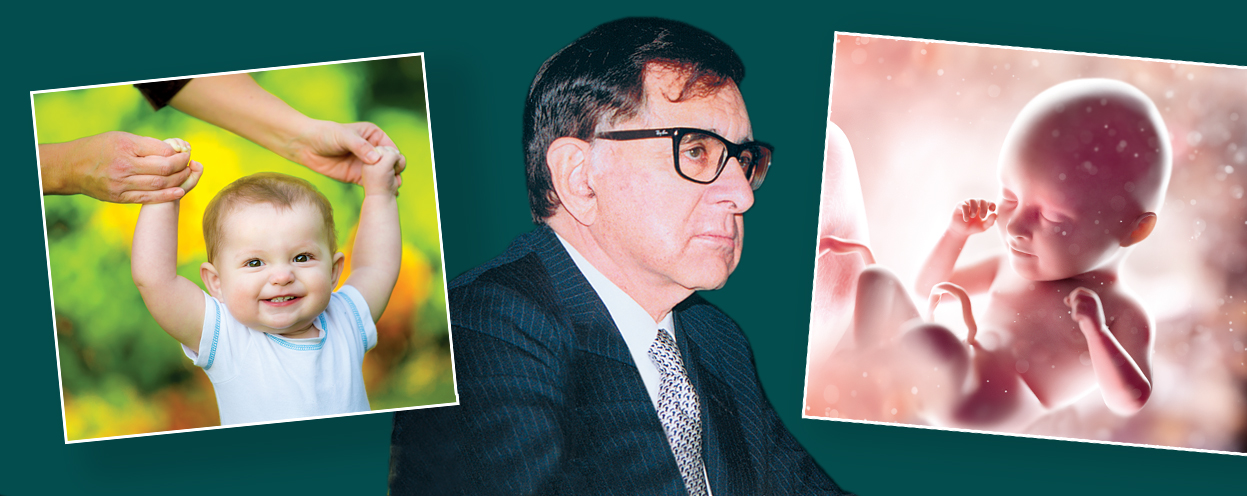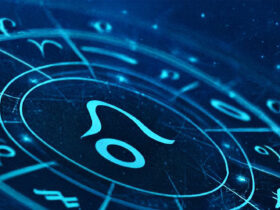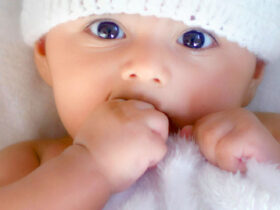The Conversion of Bernard Nathanson

Bernard Nathanson (b. 1926), a university professor at Cornell and a professed atheist, was one of the world’s leading pro-abortionists. He relentlessly pursued the legalization of accessible and low-cost abortion in the United States. In 1968, Nathanson became a founding member of the National Abortion Rights Action League (NARAL). He ran the biggest abortion clinic in the States and claimed responsibility for 75,000 abortions. He later confessed that this number included his own unborn child whom he killed with his own hands. But there took place in Nathanson’s life a miraculous change of heart and mind. The world’s most prominent abortionist became a leading defender of the lives of unborn children. After many years of preparation, he was baptized into the Catholic Church.
Family home and school
His father, a professor of medicine and the son of Jewish migrants, had rejected Orthodox Judaism as a student. He did not believe in God, but only in a “superior power” (Nathanson B. The Hand of God: A Journey from Death to Life by the Abortion Doctor who Changed his Mind. Washington, DC: Regnery, 2001, 109). His father’s nihilistic attitude and beliefs, which he instilled in his son, left a lasting impression on Bernard’s life and personality. Bernard grew up in a home in which the Jewish faith was not practiced, although its customs and traditions were maintained. His father’s hatred for Bernard’s mother further exacerbated the situation at home.
Bernard’s parents sent him to one of New York’s best schools (Columbia Grammar School), which was attended by children of the wealthiest Jewish families. Like his father whom he looked up to, Bernard rejected religion, believing it to be a useless complication in life—a millstone. Despite his lack of faith, Bernard’s father insisted he attend Hebrew school three times a week. There he learned Hebraic prayers by heart and became convinced that the Jewish religion was stern and unforgiving. “My childhood image of God,” he reflected years later, “was like the brooding, majestic, full-bearded figure of Michelangelo’s Moses. There he sat hunched, pondering my fate and on the point of pronouncing his inevitably damning judgment. This was my Jewish God: massive, leonine, and forbidding. (What a revelation it was to me when out of sheer frustration and boredom, while serving in the United States Air Force, I began attending an evening Bible study course and discovered that the New Testament God was a loving, gentle, and all-forgiving figure—one in whom I would seek, and ultimately find, the forgiveness I had pursued so hopelessly, for so long)” (27).
He began his studies at the prestigious McGill Medical School in 1945. In his fourth year, he was greatly impressed by a professor of psychiatry, Karl Stern. Stern was a wonderful teacher and distinguished scholar, and he was also a Jew. Nathanson worshipped him, impressed by his outstanding lectures and serenity of manner. He was unaware then that Stern had converted to Roman Catholicism in 1943, after years of contemplation, analysis, and reading. Stern described his experience of conversion in The Pillar of Fire, published in 1951. Nathanson was shocked when he read the book for the first time in 1974. The autobiography contributed significantly to his conversion to Catholicism. In the last chapter, Stern explains to his brother, an orthodox Jew, why he became a Catholic: “The Church is unchanging in her teaching. There is only one supernatural truth, just as there is only one scientific truth. What the law of Progress is for the perfection of matter, the law of Preservation is for spiritual matters. I remember when I showed you the papal encyclical about the Nazis. You were quite impressed, and you said: ‘It is as if it had been written in the first century.’ That’s just the point!” (44).
The satanic world of abortion
At a university ball in the autumn of 1945, Bernard met the captivating and innocent seventeen-year-old Ruth. They fell in love at first sight. They spent more and more time together and talked of marriage. Ruth fell pregnant. The pregnancy destroyed the lovers’ idyll. They did not want the child and decided to “do away” with it. After searching for a while, they eventually found an abortionist, who in the privacy of his clinic secretly performed the operation. Abortion was then still illegal. Once the child had been killed, Bernard and Ruth behaved like co-conspirators in an unimaginable crime that could not be mentioned. Years later Bernard recalled, “I am sure—despite her brave face, her loyalty, and love, her pragmatic evaluation of the whole sorrowful gestalt—I am sure that in some melancholy corridor of her mind lurked the questions: Why didn’t he marry me? Why couldn’t we have had this baby? Why should I have had to imperil my life and my future children for the sake of his convenience and academic schedule? Will God punish me for what I have done by making me barren?” (57).
For Bernard, questions of a religious nature were of no consequence at this time. He writes, the “stiff-backed Jewish atheist was already freezing into his mold” (58). He worried exclusively about Ruth’s health and future reproductive ability. They soon parted. This experience was Nathanson’s first journey into the “satanic world of abortion” (58).
In the mid-sixties, Bernard finished his residency in obstetrics and gynecology, and he stood at the threshold of a highly promising career. He already had two broken marriages behind him, both destroyed—as he later admitted—by his “own selfish egoism and inability to love” (58). He impregnated a woman who loved him very much. She begged him to let her keep the pregnancy and to have the child. Nathanson was adamant: he demanded that she terminate the pregnancy because he could not afford to support a child, and that if she did not, he would not marry her. He suggested that he would personally abort their child. He terminated its life very professionally. He had no pangs of conscience, not even the shadow of a doubt that he was doing wrong. He was a doctor-abortionist and he had done his job well.
Before performing an abortion, neither Nathanson nor other doctors informed their patient of the risks attached to this procedure. After his conversion, he wrote: “now it turns out there may be a relationship between abortion and breast cancer; thousands of women have indeed been rendered sterile in the aftermath of a botched abortion; and the death rate of women seeking abortion after the thirteenth week exceeds that of childbirth. The arrogance of those practicing medicine has always been recognized as an ugly appendage of the profession, but the massive hubris of the abortionist was and continues to be astonishing.
“For every ten thousand Ruths there is one abortionist: icy; conscienceless; remorselessly perverting his medical skills; defiling his ethical charge; and helping—nay seducing, with his clinical calm, his oh-so-comforting professionalism—women into the act that comes closes to self-slaughter. It is no accident that the next step in the perverse mutation of medical skills is to be played where the physicians are endowed by the state to assist, always in the name of compassion, in the act of suicide. How the world would have been changed had some misguided ‘expert’ in the calculus of suffering climbed up on the cross and fed Jesus a dose of hemlock within an hour of His crucifixion”(61–2).
In 1968, Dr. Nathanson became a founding member of the National Abortion Rights Action League, whose mission was to legalize abortion in the USA. After the legalization of abortion in the state of New York in 1970, Nathanson was nominated director of the biggest abortion clinic in the world. He admitted responsibility for performing 75,000 abortions. In an article written shortly before his conversion, Confession of an Ex-Abortionist, he described the tactics used by himself and his NARAL colleagues (and other pro-abortionists worldwide) to bring down all laws restricting abortion in the United States of America. We need to remember that in the sixties most Americans were against abortion. Within five years, thanks to an intensive marketing campaign, the specialists at NARAL succeeded in convincing the U.S. Supreme Court to legalize abortion on demand until the ninth month of pregnancy.
“How did we do this? It is important to understand the tactics involved, because these tactics have been used throughout the western world with one permutation or another, in order to change abortion law” (Mallon J. Bernard Nathanson. 2009).
The first tactical measure determining success consisted in convincing the media that the acceptance of abortion was a sign of enlightened liberalism. They knew public opinion polls would not support them. So they fabricated data based on fictitious polls: they informed the media that, according to the most recent polls, 60 percent of Americans were in favor of abortion; they reported as fact that 10,000 women were dying annually as a result of illegal abortions (the actual figure was 200–250) and that over a million women were undergoing illegal abortions each year (the actual number was about 100,000). The continual and blatant repetition of big lies by the public media succeeds in convincing listeners. This propaganda campaign proved very effective. In just five years NARAL managed to convince a majority of society that abortion should be legalized as quickly as possible.
The second tactical measure consisted in playing the so-called “Catholic card”. They continually vilified the Catholic Church and its socially backward ideas, describing the Church hierarchy as hypocritical villains who opposed abortion in an effort to limit freedom of choice. This theme was repeated constantly. They fed the media various lies, such as, “Everyone knows that only the clergy oppose abortion. Most lay Catholics favor abortion.”
The third measure was to make the propaganda campaign more believable by suppressing scientific evidence that human life began at conception. NARAL insisted that it was “impossible to determine when life begins; that the question [was] a theological or moral or philosophical one, anything but a scientific one. Fetology [the study of the beginnings of human life] makes it undeniably evident that life begins at conception and requires all the protection and safeguards that any of us enjoy”. (Mallon J. Bernard Nathanson. 2009. http://web.mac.com/johnmallon/Site/Bernard_Nathanson.html)
Nathanson writes, “As I look back across the twenty-five years separating me from that revolting extravaganza playing itself out on the bodies of pregnant women and their slaughtered babies, I am struck by the uncritical nature of the task we had set for ourselves, by the moral and spiritual vacuum at the core of this fantastic operation, by our unquestioned certainty of the high level of moral rectitude on which we operated. And yet, the thing was so obviously sordid. Why couldn’t we make the link between the ethical and the moral, between the shoddy practices and shabby practitioners, the evident greed and callous motivations: between the crassness of the enterprise and those involved in it, between all these ethical indicators and the grotesque immorality of the act itself?” (106).
Conversion
In 1973, Nathanson became head of the obstetrics department in St. Luke’s hospital in New York. For the first time ultrasound equipment was installed there—an advanced technology that allowed the observation and examination of the fetus inside the mother’s womb. Ultrasound opened a whole new world to Nathanson. The gynecologist said, “For the first time we could really see the human fetus, measure it, observe it, watch it, and indeed bond with it and love it” (125). Ultrasound images made an incredibly strong impression on the viewer. With the introduction of ultrasound, Nathanson’s attitude to the human fetus changed radically: “With ultrasound technology we could not only know that the fetus was a functioning organism, but we could also measure its vital functions; we could weigh it and estimate its age, watch it swallow and urinate, view it in its sleeping and waking states and watch it move itself as purposefully as a newborn” (146). From then on, Nathanson was no longer convinced that abortions should be provided on demand. He dramatically cut down the number of procedures to those cases that he believed were medically justified. He performed his last abortion in 1979.
By 1984 he was starting to seriously question abortion. He wanted to know what actually happened during abortions. He had carried out so many of them—but always blindly, mechanically, thoughtlessly. He would insert an instrument into a uterus, turn on a machine, and it would proceed to suction out various shards of tissue. He needed to know what really went on. So he asked his friend Jay, who carried out twenty abortions a day, to switch on the ultrasound during the procedure and to record it. The friend carried out his request diligently. When the two men viewed the tapes in the editing studio they were so shocked that Jay vowed he would never again perform another abortion. “I was shaken to the very roots of my soul by what I had seen,” Nathanson later wrote (141). For the first time he had witnessed the events that took place during an abortion and knew it for what it really was. The tapes were professionally reworked to create the film The Silent Scream. It was a documentary on a macabre crime committed against a most innocent and defenseless being. It showed a twelve-week old child in its mother’s womb attempting to defend itself against an instrument that crushed it and tore it to pieces and another that suctioned it out. The film premiered in Florida on January 3, 1985; it caused a sensation.
Liberals were up in arms since the documentary was a great threat to the pro-abortion campaign. The liberal media tried to block any attempt at making the truth available to the wider American community. Television networks refused to air the film, nor would they sell airtime for advertisements praising pro-life choices. Here was clear proof of the extent to which the media was dominated by people on the side of the culture of death.
Scientific facts opened Nathanson’s heart: he accepted the incontrovertible truth that human life began at conception and that every termination of pregnancy was the murder of an innocent and defenseless human being. Dr. Nathanson changed his views on abortion on the basis of scientific considerations, not religious ones.
The road to the Catholic Church
Bernard Nathanson’s spiritual journey towards a belief in God was a very difficult one. To start with, he discovered that human life was sacred from conception to natural death; only later did he come to believe in God’s existence. “I was not seeking anything spiritual; my desires have been—for the most part—earthly and of the flesh, my goals concrete and tangible—and readily liquefiable into cash. To make matters worse, I was openly contemptuous of all this as a stiff-backed Jewish atheist” (187). The period 1978–1988 was a particularly trying period in his life. “I would wake up each morning at four or five o’clock, staring into the darkness, hoping (but not praying yet) that there would flash forth in the gloom the news of my acquittal before some invisible tribunal. After a period of fruitless waiting, I would turn on my bedside lamp, pick up the literature of sin (by this time I had accumulated a substantial store of it), and reread passages from St. Augustine’s Confessions (a staple), Dostoevsky, Paul Tillich, Kierkegaard, Niebuhr, and even Lewis Mumford and Waldo Frank” (188).
Thoughts of suicide visited him more and more often. He could not bear the weight of his sins, particularly the thousands of abortions of innocent children. He tried treating his spiritual pain and despair with tranquilizers, alcohol, self-help books, and psychiatric counseling. Nothing helped. At the same time, he was becoming more involved with the pro-life movement. He lectured throughout the United States, wrote books, and became politically active. At pro-life rallies he would make it clear to the audience and organizers that the only thing uniting him and them was their shared opposition to abortion; on the question of belief in God, he remained aloof.
During these rallies and protests held in front of the abortion clinics, he could not help noticing an indefinable air of selflessness permeating the crowd. Though surrounded by police cordons, the faces of those gathered and praying there radiated pure love. They prayed tirelessly and kept reminding one another of the absolute prohibition against violence. “It was, I suppose, the sheer intensity of the love and prayer that astonished me; they prayed for the unborn babies, for the confused and frightened pregnant women, and for the doctors and nurses in the clinic. They even prayed for the police and the media who were covering the event. They prayed for each other, but never for themselves. And I wondered: how can these people give of themselves for a constituency that is (and always will be) mute, invisible, and unable to thank them?” (192).
The example given by these people led Nathanson to seriously entertain the possibility of God’s existence. For the first time in his life, he writes, he began to consider the existence of God—“a god who problematically had led me through the proverbial circles of hell, only to show me the way to redemption and mercy through His grace. The thought violated every eighteenth-century certainty I had cherished; it instantly converted my past into a vile bog of sin and evil; it indicted me and convicted me of high crimes…and simultaneously – miraculously – it held out …the growing belief that Someone had died for my sins—two millennia ago” (193–4).
Before embarking on a spiritual journey in search of God, he began voraciously to read the autobiographies of great Catholic converts, including Malcolm Muggeridge, Cardinal Newman, Graham Greene, as well as those of other orthodox Christians, such as C.S. Lewis, Walker Percy, and others. Yet he most closely identified himself with the experience of his professor, Karl Stern, who described his fascinating spiritual journey in The Pillar of Fire. Nathanson admitted to being reduced to tears at each rereading of Stern’s autobiography. “It has been my fate to wander the globe in search of the One without Whom I am doomed, but now I seize the hem of His garment in desperation, in terror, in celestial access to the purest need I have ever known. My thoughts return to the hero of my medical school years, Karl Stern, who was undergoing a spiritual metamorphosis at the very time he was instructing me in the arts of the mind, its orders, and its sources, and the words he wrote in a letter to his brother: ‘And there was no doubt about it—toward Him we had been running, or from Him we had been running away, but all the time He had been in the center of things.’”(196).
Nathanson was aware that many people in the pro-life movement were praying for him. The spiritual change came about gently and naturally, bringing him relief and an inner peace. He began weekly sessions with Father McCloskey, who became his spiritual guide along the hard paths of faith. He publically spoke of his decision to convert to Catholicism in 1994. Cardinal J. O’Connor baptized him on December 9, 1996 at St. Patrick’s Cathedral in New York. Nathanson’s Jewish friends welcomed his decision. Dr. Nathanson said, “In accepting Christ, I cherish even more the fact that I belong to the Jewish culture, people, and tradition. That will never change, and it is a source of great pride.” From then on, he went to Holy Mass regularly, received the sacrament of confession frequently, and led a deep prayer life. In his role as a scientist—at countless conferences and in his books and films—he gave witness to the sanctity of human life, which is as sacred as God Himself, the giver of life. No one has the right to take another’s life. The conversion of Dr. Bernard Nathanson, world-renowned abortionist and stiff-backed atheist turned devout Catholic and leading defender of the lives of unborn children, is undoubtedly one of the greatest conversions of the twentieth century.
When he visited Poland on October 10, 1996, he made a passionate appeal to Polish parliamentarians at a press conference at the Porczyński Gallery: “I beg you: do not take a single step in the direction of liberalizing abortion! History will never forgive you. I warn you: do not make the same mistakes we made in America. A vote for abortion is also a vote for euthanasia, for the killing of the aged, the crippled and terminally ill, for genetic experiments. It is the first step on a slippery slope, and at the bottom of it is the total dehumanization of life—the valley of death.”






